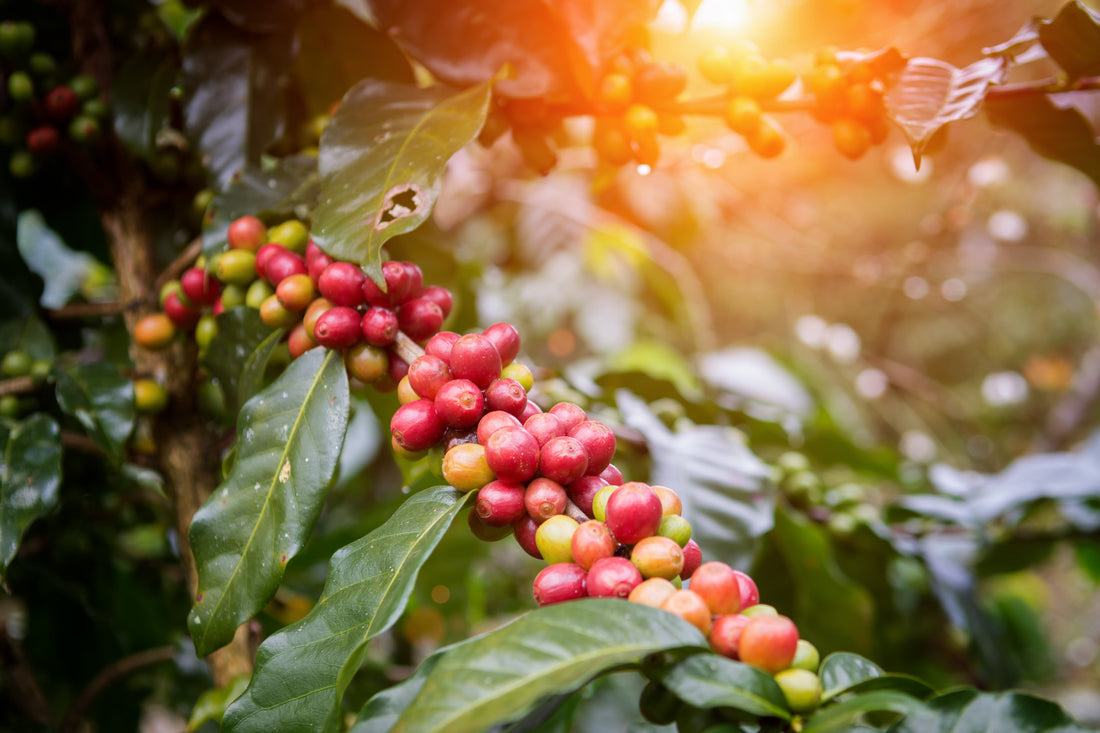Exploring Coffee Processing Methods with Viking Coffee Co
At Viking Coffee Co, we believe that every cup tells a story—of origin, craftsmanship, and flavor. One of the most fascinating chapters in that story is the coffee processing method. From the moment the coffee cherry is picked to the time it reaches your mug, the way it’s processed shapes its taste, aroma, and character. Let’s dive into four key methods—Washed, Natural, Anaerobic Natural, and Honey—and discover how they transform the humble coffee bean into something extraordinary.
Washed Process: Clean and Crisp
The Washed process, also known as the wet method, is a favorite for highlighting a coffee’s clarity and bright acidity. After the cherries are harvested, they’re pulped to remove the outer skin, leaving the sticky mucilage clinging to the bean. These beans are then fermented in water tanks for 12–48 hours, breaking down the mucilage, before being thoroughly washed and dried. The result? A clean, vibrant cup with pronounced flavors—think crisp citrus, floral notes, or green apple. At Viking Coffee Co, our washed coffees are perfect for those who love a refined, articulate brew that lets the bean’s true personality shine.
Natural Process: Bold and Fruity
If Washed is the minimalist, then Natural is the wild adventurer. In the Natural (or dry) process, the entire coffee cherry is dried in the sun—skin, pulp, and all—before the bean is hulled. This slow drying, often on raised beds or patios, allows the sugars in the fruit to seep into the bean, creating a bold, fruity profile. Expect juicy berry notes, tropical sweetness, or even a wine-like richness. It’s a method as old as coffee itself, and at Viking Coffee Co, our natural-processed beans bring a rugged, untamed energy to your morning ritual—perfect for those who crave something daring.
Anaerobic Natural: Funky and Experimental
Take the Natural process, add a twist of innovation, and you get Anaerobic Natural. Here, whole cherries are sealed in oxygen-free tanks (often with added elements like yeast or fruit juices) before drying. This controlled fermentation amplifies the coffee’s complexity, coaxing out funky, unexpected flavors—think boozy undertones, ripe stone fruit, or even a hint of spice. It’s a modern method that pushes boundaries, and at Viking Coffee Co, our Anaerobic Natural offering, Crucible, are for the bold explorers.
Honey Process: Sweet and Balanced
The Honey process strikes a delicious middle ground between Washed and Natural. After the cherry’s skin is removed, the beans are dried with some or all of the sticky mucilage (the “honey”) still intact—no water fermentation involved. Depending on how much mucilage is left—categorized as yellow, red, or black honey—the flavors range from subtly sweet to deeply syrupy. You might taste caramel, stone fruit, or a smooth, honeyed finish.
Why It Matters
Each processing method is like a different chapter in the coffee journey, shaped by tradition, climate, and the hands that craft it. At Viking Coffee Co, we source beans from around the world, celebrating the diversity of these techniques. Whether you’re drawn to the pristine clarity of a Washed, the untamed fruitiness of a Natural, the experimental edge of an Anaerobic, or the sticky sweetness of a Honey, there’s a process—and a flavor—for every palate.
So, next time you sip a Viking Coffee Co brew, take a moment to appreciate the craft behind it. Crucible combines the Myanmar Washed and Anaerobic process for a truly unique cup of coffee. Don't miss out! It goes live April, 4th!

